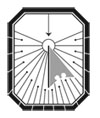The Poetry of Bohdan-Ihor Antonych and Zuzanna Ginczanka in the Context of European Modernism
DOI:
https://doi.org/10.18523/kmhj189067.2019-6.177-190Keywords:
Modernism, otherness, Shoa, Lemko culture, Bohdan-Ihor Antonych, Zuzanna GinczankaAbstract
This article compares the poetry of two prominent modern writers: Polish-Jewish poetess Zuzanna Ginczanka (Sara Ginzburg, 1917–1945), and Ukrainian Lemko poet Bohdan-Ihor Antonych (1909–1937). They are believed (by Yaroslav Polishchuk et al.) to have certain poetic, stylistic, thematic, and literary similarities. The main discourses of their poetic imaginum mundi are studied with the use of a simple formula that includes five components. Tracing the interplay of nature, childhood, religion, and civilization in the development of an image of a holistic personality in their poetry, I analyze their common and differing ideas, images, motifs, and themes. The article also outlines the underlying similarities of both poets, i.e., their otherness, and their references to childhood as a certain place in their poetry.
References
Antonych, Bohdan-Ihor. Knyha Leva [The Lion’s Book]. Lviv: Drukarnia Naukovoho tovarystva im. Shevchenka, 1936.
Antonych, Bohdan-Ihor. Pryvitannia zhyttia: knyzhka poezii [Greeting Life: Poetry Collection]. Lviv: Dazhboh, z drukarni vydavnychoi spilky “Dilo,” 1931.
Antonych, Bohdan-Ihor. Try persteni: poemy i liryka [Three Rings: Poems and Lyrics]. Lviv: Nakladom Bohdana Dorotskoho, drukarnia Naukovoho tovarystva im. Shevchenka u Lvovi, 1934.
Antonych, Bohdan-Ihor. Zibrani tvory [Collected Works]. New York; Vinnipeg: Slovo, 1967.
Araszkiewicz, Agata. Wypowiadam wam moje życie: Melancholia Zuzanny Ginczanki. Warsaw: Fundacja OŚKa, 2001.
Bondarenko, Alla. “Slovesni masky ‘dytyny buttia’ v khudozhnomu movomyslenni B.-I. Antonycha [Verbal Masks of the ‘Child of Being’ in B.-I. Antonych’s Artistic Speech-Thinking].” Slovo i chas 12 (2001): 43–49.
Dubrova, Oksana. Tvorchi paraleli: Volt Vitmen ta Bohdan-Ihor Antonych [Creative Parallels: Walt Whitman and Bohdan-Ihor Antonych]. Donetsk: LANDON-XXI, 2012.
Gerasymuk, Iryna. “Antonych: zanadto blyzko do smerti? [Antonych: Too Close to Death?].” Accessed September 30, 2018. http://zhurnal.lib.ru/g/gerasimuk_i_w/antonychzanadtobluzkodosmerti.shtml.
Ginczanka, Zuzanna. Wiersze / Virshi: polskoiu ta ukrainskoiu movamy [Poetry: In Polish and in Ukrainian]. Lviv: Vydavnytstvo “Forum vydavtsiv,” 2017.
Gliński, Mikołaj. “Sana, Sanechka, Gina: krasa i tavro Zuzanny Ginchanky [Sana, Sanechka, Gina: The Beauty and the Stigma of Zuzanna Ginczanka].” Accessed September 27, 2018. https://culture.pl/ru/article/sana-sanechka-gina-krasa-i-tavro-zuzanni-ginchanki.
Ilnytskyi, Danylo. “Kulturna kartohrafiia zhyttievoho svitu Bohdana-Ihoria Antonycha: Sianotska himnaziia [The Cultural Cartography of Bohdan-Ihor Antonych’s World: The Sianok Gymnasium].” Paradyhma 7 (2013): 284–304.
Ilnytskyi, Mykola. Vid “Molodoi Muzy” do “Prazkoi shkoly” [From “Moloda Muza” to “Prazka Shkola”]. Lviv: Instytut ukrainoznavstva im. I. Krypiakevych NAN Ukrainy, 1995.
Koprowska, Karolina. “‘Tuwim w spуdnicy’? Poetyka Skamandra w twуrczości Zuzanny Ginczanki.” Zeszyty Naukowe Towarzystwa Doktorantуw UJ Nauki Humanistyczne 5 (2014): 79–88.
Lubkivskyi, Roman. “Antonych i Tychyna: neochevydni tochky dotyku [Antonych and Tychyna: Hidden Points of Contact].” Den, November 7, 2009. https://day.kyiv.ua/uk/article/istoriya-i-ya/antonich-i-tichina-neochevidni-tochki-dotiku.
Pavlychko, Dmytro V. Persten zhyttia: literaturnyi portret Bohdana-Ihoria Antonycha [The Ring of Life. A Literary Portrait of Bohdan-Ihor Antonych]. Kyiv: Veselka, 2003.
Tkachuk, Mykola. “Khudozhnii svit liryky Bohdana-Ihoria Antonycha [The Artistic World of Bohdan-Ihor Antonych’s Lyrics].” Studia methodologica 40 (2015): 53–70.
Zubrytska, Mariia. “Poetyka ‘zelenoho’ chaso-prostoru v tvorchosti B.-I. Antonycha ta B. Lesmiana: sproba porivnialnoho analizu [The Poetics of the ‘Green’ Chronotope in the Works of B.-I. Antonych and B. Leśmian: An Attempt at a Comparative Analysis].” Paradyhma 4 (2009): 81–87.
Downloads
Published
How to Cite
Issue
Section
License
Kyiv-Mohyla Humanities Journal provides free access to original research without restriction barriers (i.e. subscription fees, licensing fees etc.). The journal allows re-use of content for non-commercial/educational purposes indexing the source.
Unless otherwise indicated, content is licensed under the Creative Commons Attribution 4.0 International (CC BY 4.0) license, which means you are free to:
copy
distribute
transmit
adapt
and make commercial use of the work
...provided that any use is made with attribution to author(s) and Kyiv-Mohyla Humanities Journal.
The author passes copyright of the article to the journal and Kyiv-Mohyla Humanities Journal; author can archive post-print articles (PDF versions) on s/he web-site (http://www.sherpa.ac.uk).

